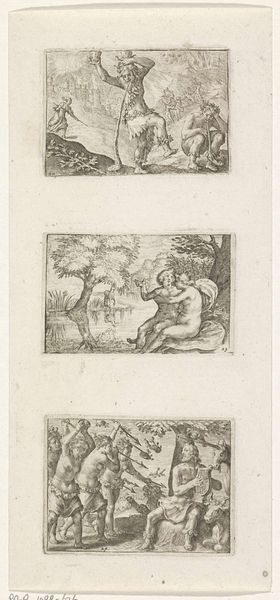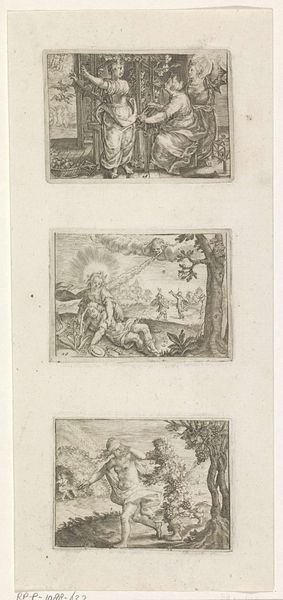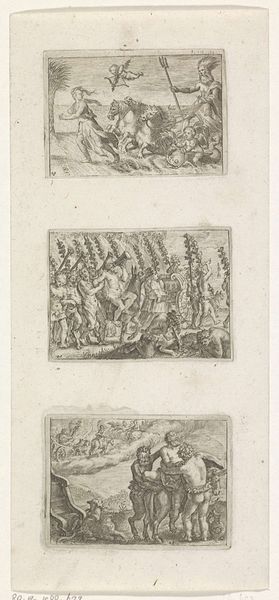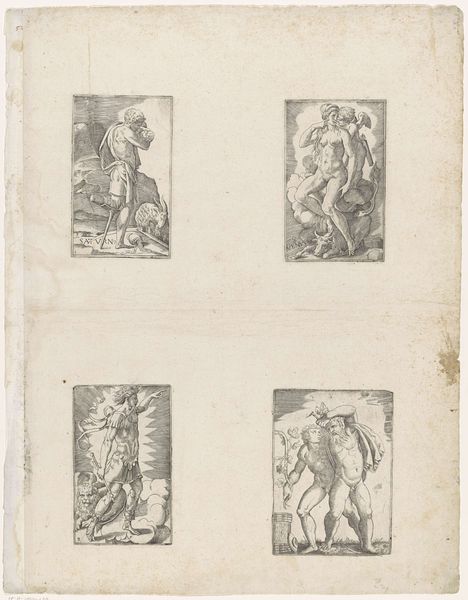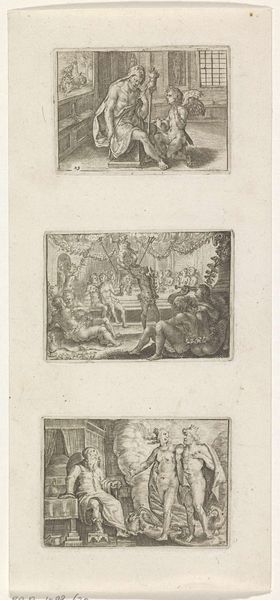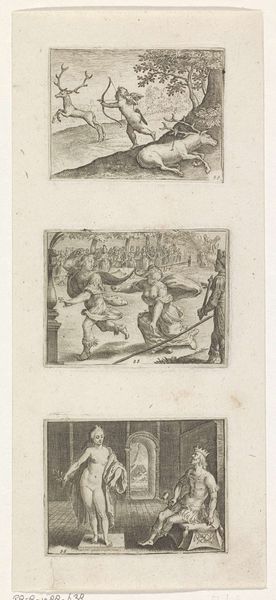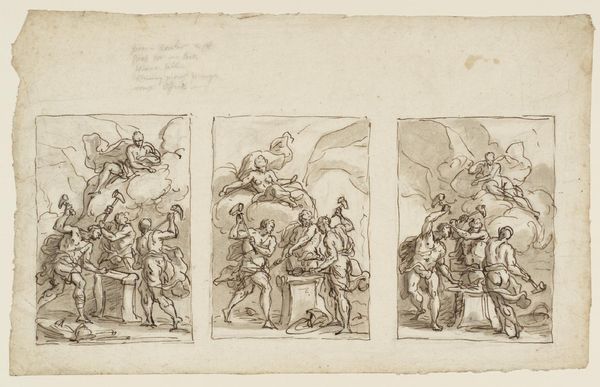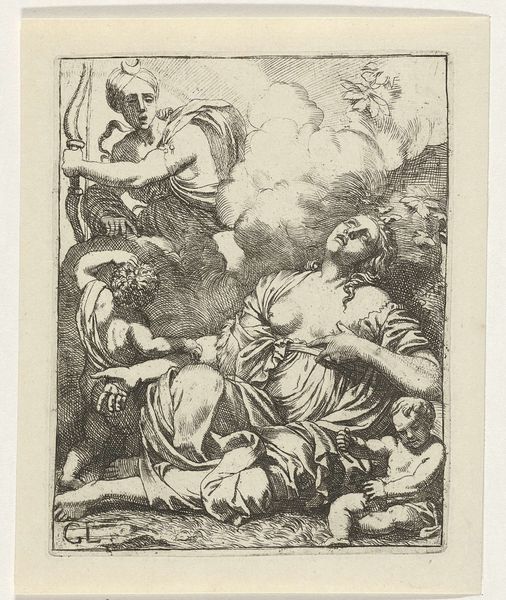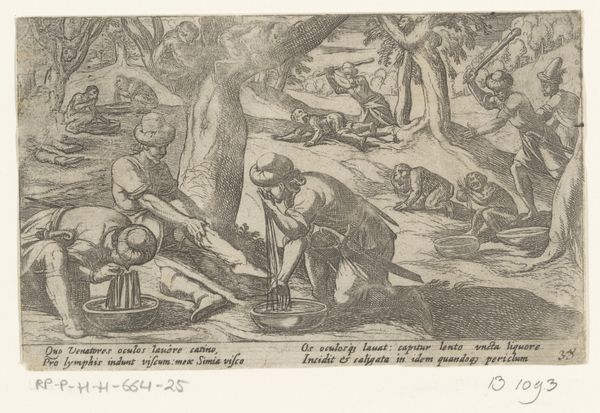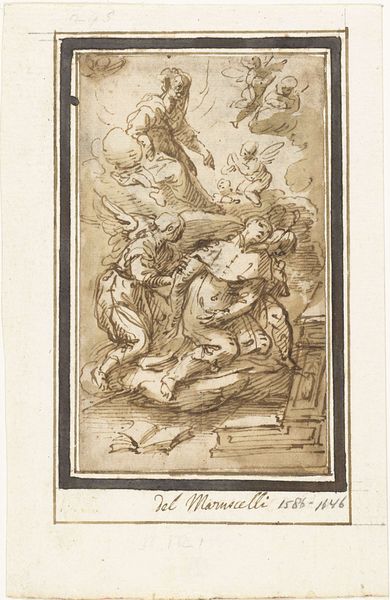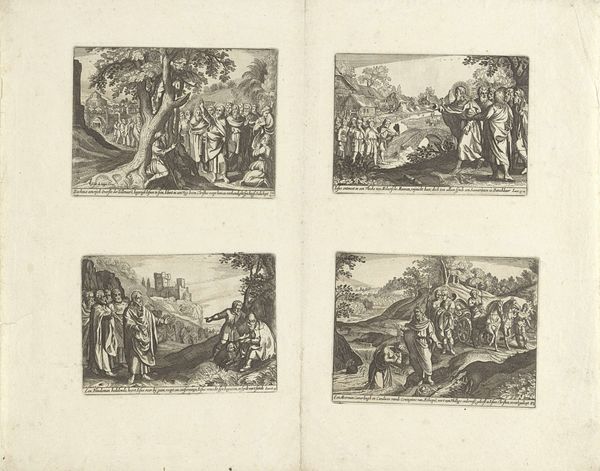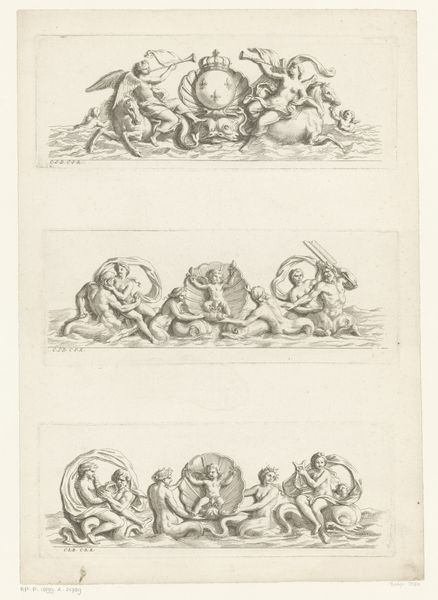
Bacchus straft een man die een wijngaard verwoest / Bacchus redt Ariadne van het eiland Naxos / Bacchus en de slapende Amor 1680 - 1800
0:00
0:00
print, engraving
#
allegory
#
baroque
# print
#
landscape
#
figuration
#
line
#
genre-painting
#
history-painting
#
engraving
Dimensions: height 218 mm, width 100 mm
Copyright: Rijks Museum: Open Domain
Editor: This print, dating from somewhere between 1680 and 1800, presents three scenes relating to Bacchus: punishing a vandal, rescuing Ariadne, and alongside a sleeping Amor. It feels very baroque with all its energy, but there’s also a curious stillness in each panel. How do you interpret this work, given the socio-political environment it comes from? Curator: What immediately strikes me is how these scenes, seemingly celebrating hedonism and divine intervention, exist within a specific power structure. Consider the role of Bacchus, not just as a god of wine, but as a figurehead. His actions – punishment and rescue – are not simply benevolent, but rather reinforce a particular order. Who decides what constitutes "vandalism" against a vineyard? And whose cries for help are deemed worthy of divine intervention, such as the abandonment of Ariadne by Theseus? Editor: So, you're suggesting that Bacchus, or rather the artist's portrayal, is a commentary on social hierarchies? That's quite interesting. I initially viewed it more as a straightforward celebration of mythology. Curator: Not solely, no. The depiction of Amor sleeping in the final panel could also be read critically. Is it innocent and idyllic, or does it hint at a dormancy of love, perhaps reflecting societal repression under those hierarchies? Who benefits from that status quo? Think about the patron class. Editor: That makes me wonder about the function of mythology itself during this era. Was it merely escapism, or could it have served as a veiled critique? Curator: Precisely! The artist could use these mythological figures to critique how concepts like divine right affected actual earthly social issues. These were narratives understood across literate society, deployed to uphold existing paradigms, or… subtly challenge them. It's about questioning whose narratives were, and still are, privileged. Editor: It is interesting to look at the art through a different lens! Thanks! Curator: Thank you. It is by engaging such dialogues that we reveal meaning.
Comments
No comments
Be the first to comment and join the conversation on the ultimate creative platform.
